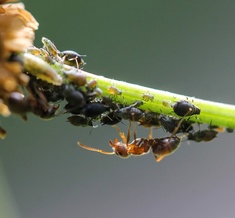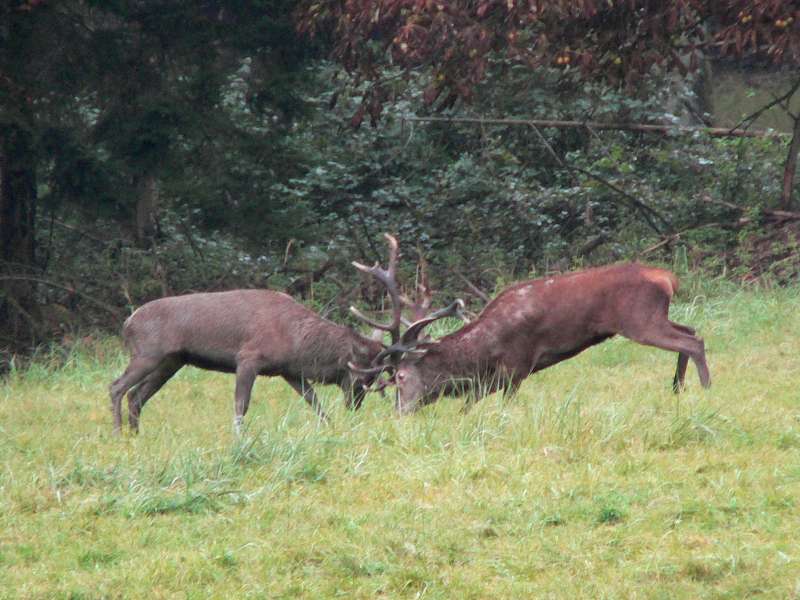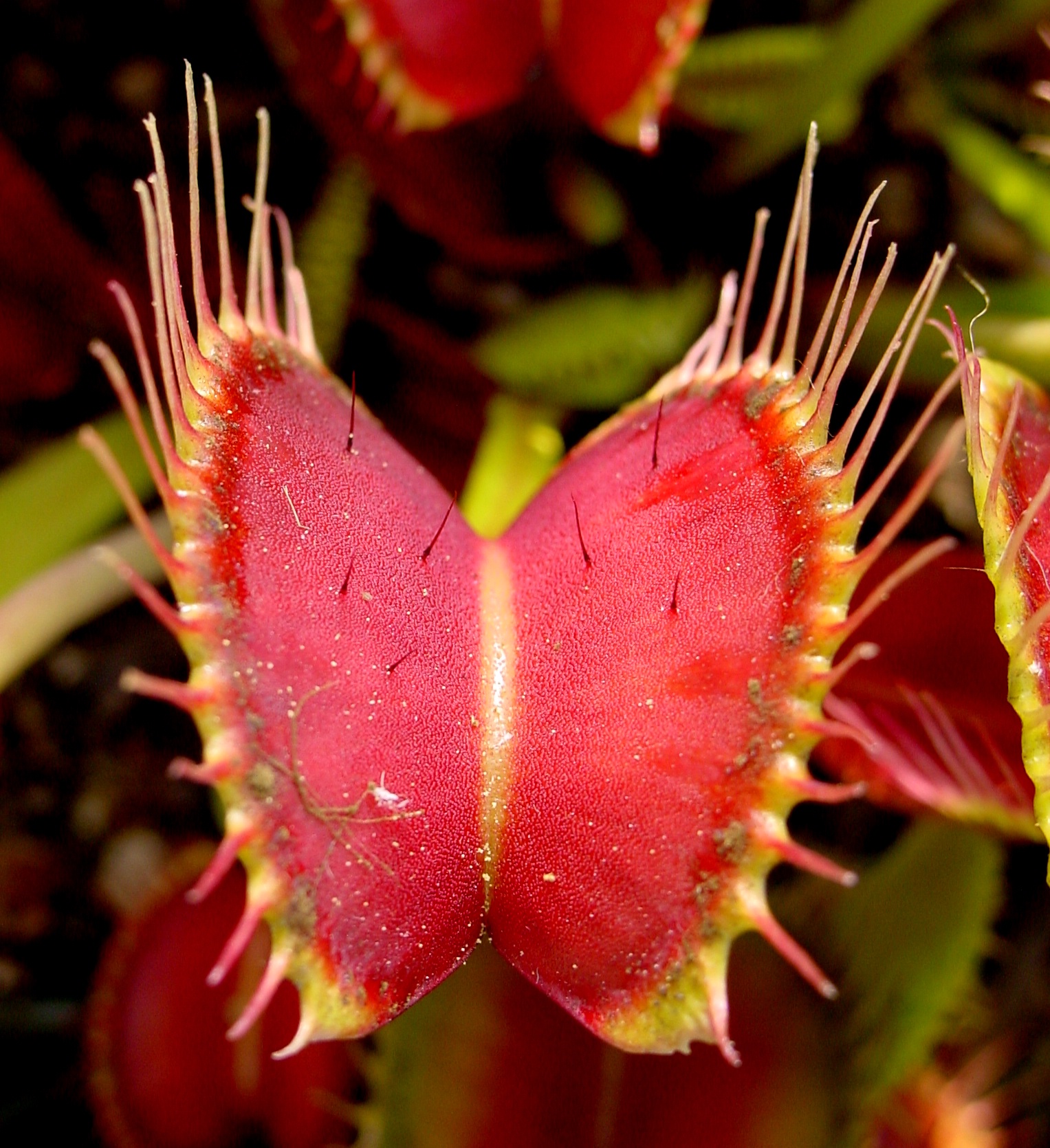
Types of symbiosis
First published: Wednesday November 11th, 2020
Report this blog
Actually in biology symbiosis can take several forms, where different living things have evolved very close-knit and long-term relationships of any kind. There are different kinds, and depending on which kind you are in, you can benefit or be harmed by the relationship.
Let's go through the different kinds in more detail together.
Competition:
-↔️-Competition is very straightforward, and is prevalent everywhere in the natural world. It is when two or more organisms compete for a resource. It can be any kind of resource, including food, mates, and territory, but crucially the resource has to be limiting. Cows in a field are not competing for grass because there is enough grass to go around (unless you're a very negligent farmer). But in a case where there is limited food, that is where organisms are forced to compete for it, such as scavengers fighting viciously over a carcass. Competition can be between organisms of the same species (intraspecific) or between different species (interspecific).

Male Red Deer (known as Harts) are famous for ramming their antlers as they compete for mates during rutting.
In the world of Hermit Crabs a strong sturdy shell is of utmost importance, and so scenes like this are common. And in a crowded parking lot, motorists seething with road rage are known to combat just as fiercely for the last parking space.
The essence of competition is such that organisms negatively impact one another. It isn't pretty, but it is a driving force of evolution.
Predation:
+↔️-
Predation is where one organism benefits at the expense of another, after killing it. Lions preying on zebras and spiders catching flies are obvious examples of predation. But not all predators are animals, even some plants eat animals, such as the pitcher plant or the Venus Flytrap.

Predators can even be microscopic, like the fearsome Paramecium, which hunts and consumes bacteria.
Parasitism:
+↔️-
Unlike predation, parasitism is where one benefits at the expense of another, without killing it. There are many well known examples that affect many animals including humans; ticks, lice, bedbugs, fleas, tapeworms, as well as parasitic fungi. The idea is that parasites don't want to kill the thing they are leeching off (their host) so that they can get a continual source of energy from them.
A notoriously gruesome example is that of the isopod called Cymothoa exigua, which affects particular species of fish:
It infiltrates the fish's mouth via its gills, erodes away the fish's tongue, fuses its bloodstream with that of the fish, and then becomes the fish's new tongue!!
Mutualism:
+↔️+
Mutualism is my favourite kind of symbiosis, where two species work together in harmony and both benefit each other. There are many kinds of mutualism, the clearest examples include our own relationships with animals we have domesticated over thousands of years, such as cats, dogs, horses, bees and farm animals. But we are not the only species that farm other animals, as certain species of ant are known to farm aphids/greenfly. They secrete a sweet substance called honeydew, which the ants consume. In exchange the ants protect them from predators such as ladybugs/ladybirds.
Another classic and crucial example of mutualism is the relationship between flowering plants and pollinators. Flowers provide sweet energy rich nectar for pollinators such as insects, and in exchange they transfer the flower's pollen to new flowers. This kind of relationship first took off when flowers evolved during the cretaceous period, and for millions of years most pollinators have been flying insects, but now hummingbirds are also important pollinators. Some plants like the agave plant are dependent on bats to pollinate them.
One of my favourite examples of mutualism is that of the Mosaic Boxer Crab, a tiny and beautiful type of crab which will hold with its pincers little stinging sea anemones, like boxing gloves. The anemones stinging tentacles can be used as weapons to defend itself from predators, and in exchange they get the leftover scraps of the crab's food.

Some organisms have developed a mutualistic relationship so close that they have become new kinds of organisms. A composite organism is a type of organism which is basically two species blended together into one. A classic example is lichen, which are types of fungi that contain species of algae. The fungi provides the accommodation while the photosynthetic algae brings the food to the table. The same thing happens in many types of coral, which could be considered the lichen of the sea. Although coral looks like a plant it is in fact an animal, and like lichen, houses microscopic algae in its skeleton. In exchange for the protection the coral provides, the algae supplies the food/energy and helps the coral grow.
Coral bleaching, which is where algae are ejected from coral, is an increasingly common problem in seas all around the world.
Commensalism:
+↔️0
Commensalism is where an organism benefits from another without affecting it in any way. The other doesn't benefit from the relationship, but isn't harmed either.
For example if you're driving somewhere and give a lift to a friend who happens to be going to the same place as you, you are helping them at no real expense to yourself. There are examples of just this sort of hitchhiking in the animal kingdom;
Remora fish will attach themselves to much larger fish such as sharks in order to hitch a ride. It doesn't harm the larger fish, and the remora conserves energy:

Dolphins also know how to save energy by hitching a ride, as they will surf the bow waves created by moving boats.
Amensalism:
0↔️-
And finally we have amensalism, a most interesting kind of symbiosis, where one kind of living thing negatively impacts another, without itself being affected in any way. In other words one organism causes harm to another without any obvious kind of benefit to itself.
There are a few different kinds of amensalism. Large trees can cast a shadow which blocks light from smaller plants, inhibiting their growth. Some trees, like the Black Walnut tree, emit chemicals which harming other plants immediately surrounding it. This is similar to how some microscopic organisms emit chemicals which harm others, such as Penicillium, a fungus that famously produces the powerful antibiotic penicillin. We are able to exploit its antibiotic effects to fight certain diseases. Would that count as a form of commensalism or mutualism?
Ultimately I can think of no stronger or more tragic example of amensalism than pollution caused by humans.

The sad truth is that humans damage the environment in many ways, and there is no ecological benefit to us for polluting the environment, however, whole ecosystems are under threat from our pollution. There are many many kinds of pollution that result from human activity, and many people are concerned about air pollution, carbon dioxide emissions, smog, and pollution of soil and water from farming slurry and other chemicals.
One type of pollution that people are increasingly aware of is plastic pollution, which is seriously affecting our seas and oceans. There are islands of primarily plastic garbage in the Pacific which some have calculated to be larger than Egypt. The real problem is that the plastic breaks down into microscopic particles, which then enter the food chain, affecting all kinds of animals, including humans. Some estimates claim that in a few decades there will be more plastic in the oceans than fish.
Some facts about plastic pollution:

Pollution on the coast of Singapore, plastic waste is a huge problem in Pacific island countries.
However, there is hope. If we want to stop and even reverse this plastic crisis the first step is raising awareness. There are also little steps each person can do if they want to reduce their own 'plastic footprint'. One of the simplest changes you can make with a huge impact would be to get a reusable metallic water bottle, rather than buying water in plastic bottles. I bought one two years ago for about £8/$11, though you can get them even cheaper than that. They are sold online in a vast array of colours and patterns. Also I find I have been drinking water more regularly since getting it.

So I thoroughly recommend getting a reusable metallic water bottle.
There are little things we can all do to reduce our own impact, but while ocean cleanup projects and reuse-reduce-recycle schemes are great, they only manage the symptoms of the already existing plastic waste. The bottom line is that we will only overcome the plastic crisis if we phase out single-use plastic made from petroleum. There are already numerous kinds of plastic made from things like seaweed, vegetable peels, waste crustacean shells, and hemp which, unlike petroleum based plastic, are fully biodegradable.
As for dealing with existing plastic there is an interesting prospect of making use of organisms that produce an enzyme called PETase, which digests common types of plastic. It is produced by certain species of bacteria, a fungus, and even a kind of moth larva. Maybe we will be able to make use of its effects like we do for penicillin.
Stay hopeful, stay aware of the facts, and keep up the good work. Thank you for reading.
